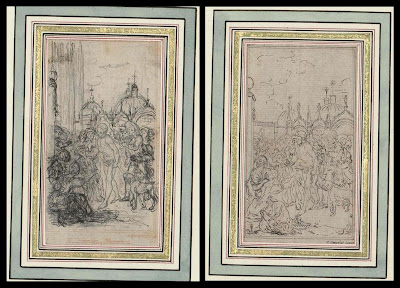Writing a post is often like making a test. The etimology of
essay comes to mind: an attempt. A blog is a great place for such attempts - yet at times it also gives space to texts I would rather not have written, ideas that were still premature or ungrounded, preconceived...
Yet this, I think, is the perfect space for such struggles, for discovering possible points of view one might feel tempted to adopt.
In my last post, I wrote about the move from product-based thinking about art to research-based thinking. The idea of a cultural universe that looks like a big lab is quite appealing to the artist (discovering is so exciting!), and often problematic for the public.
This is also related to the issue of funding: public money for such a private culture seems absurd. Why give money to people who don't want to reach out to the society that supports them?
The excellent writer
Alessandro Baricco recently wrote a very
polemic article (here is a
poor google-translation) criticizing the elitist dynamics of supporting culture, in which he suggested that public funding should be taken away from the likes of theater and opera, and instead moved to TV and education to create very ambitious programs and actually reach out to the masses and create a true evolving dialogue.
It's a very strong and shocking article.
I went back to it after having written the previous post.
There was something about it that seemed profoundly wrong and unjust.
I think the film
Il n´y a pas de Colin dans poisson, by Isabelle Taveneau, Zoé Liénard, and Odile Magniez, tells it wonderfully well:
In all the discourse about elitist art, we often forget that the consumers (yes, consumers) of this art are very often people and communities quite distant from what our stereotipical eyes seem to notice. Culture, when supported in a wise, and smart, way, is an ever-evolving process of education. Open-source, open-ended, and potentially surprizingly democratic. Having been teaching contemporary performance to groups of very varied milieus, I feel it all the time.
PS (22.03.09): I am now in Coimbra, Portugal. Today I discovered the charming and thoughtfuly renovated Museum of Science. It is a unique venue situated in an 18th-century laboratory, on the very top of the highest hill in the city. It was completely empty. Later, I went to the riverside, and discovered to my astonishment that it had crowds of people, mainly families with kids running around and adults drinking coffee. If we were to follow Baricco's ideas, we should shut down the museum (with its great program for kids and parents with kids...), as it seems to be appreciate by an irrelevant minority. Instead, we should invest more in events at the riverside, where the people are. Why, I ask, can't we try and bring these crowds to a higher level? Why are we to forget the centuries of culture we could profit from, replacing them by an «ambitious TV programming» and «education», and allowing product-based thinking to take over?
All this having said, it truly is a shame that the museum was empty. And a little product-based thinking, just a little, couldn't do much harm, could it?











 A little diorama
A little diorama My boys' work/fun area facing the South.
My boys' work/fun area facing the South.














 Hand painted with white
Hand painted with white The rocks are under water in this photo.
The rocks are under water in this photo.








